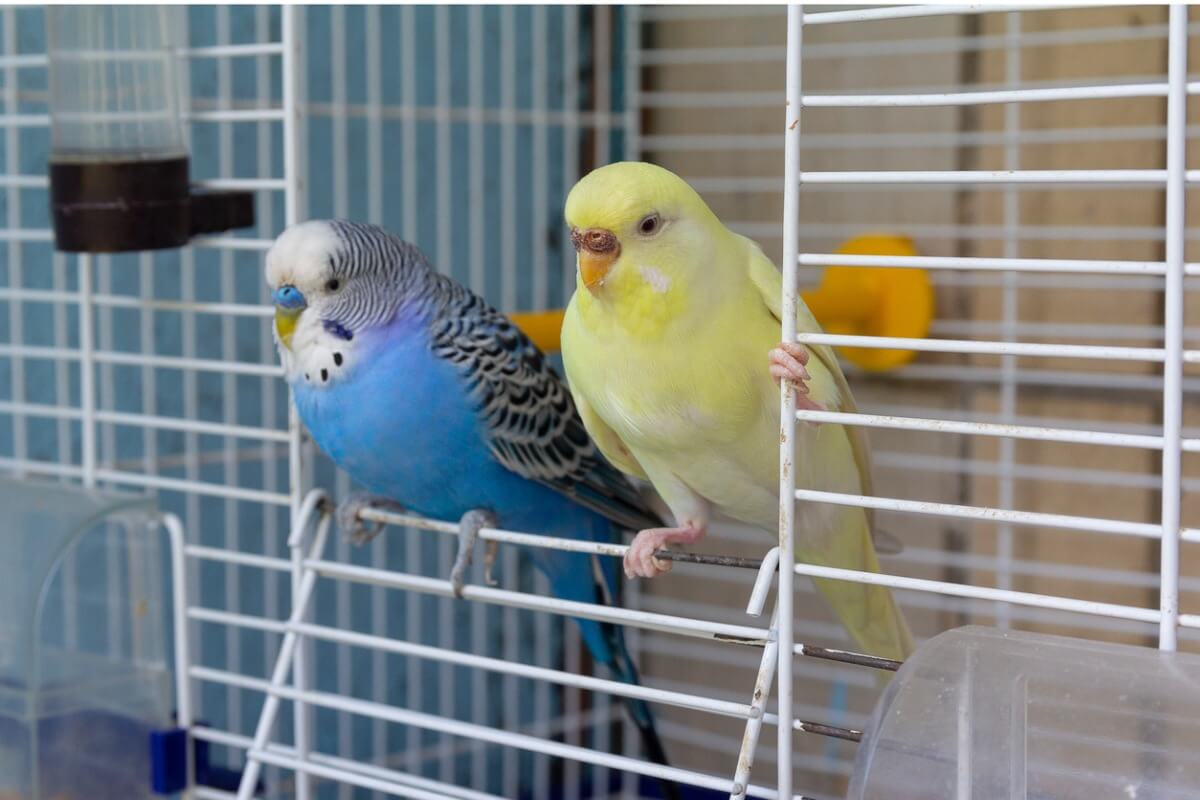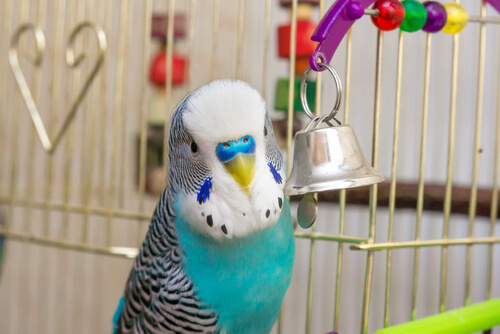5 Bird Breeds that Make Ideal Pets

Some bird breeds can be tamed quite easily, even though they’re very free animals by nature. However, they’re the ideal choice for those who want a pet that doesn’t demand as much care and attention as, for example, dogs and cats. In fact, after these two species, birds are the most common pets.
Below, we’ll tell you which are the five most common bird breeds as pets, how to care for them, and what they need. Take note of what you need to keep in mind when bringing them into your home!
Most common bird breeds in the home
Birds come in all sorts of colors and sizes, but the following five are the ones that are most popular as pets because they’re so easy to tame.
1. Parakeets
Out of the parrot family, these are the most common ones to find in homes. Their average life span is 12 years and they belong to the small bird breeds, reaching between 15 and 18 cm (6 to 7 inches)
As they’re very sociable birds, it’s advisable that they live with others of their species in the same cage. To recognize if a parakeet is male or female, we must look at the beak: if it has a bluish tone, it’s male, and if it’s tan with pink tones, then it’s female.

2. Canaries
These also belong to the smallest bird breeds. Their life span is around 10 years (in captivity) and they reach up to 13 cm (5 inches) in height when adults.
Although they aren’t as sociable as parakeets, when you pass by your canaries’ cage, they may sing to let you know that they’re happy and healthy.
3. Parrots
Out of all the medium-sized bird breeds, parrots are the most common ones to find in homes. They grow up to 25 to 30 cm (10-12 inches) and their average lifespan is between 15 and 20 years.
In captivity, they tend to be very intelligent, talkative, affectionate and friendly birds, but sometimes also a little rebellious and destructive, so it’s very important to provide a habitat where they feel at ease.
4. Macaws
Macaws are the most popular among domestic birds, as they’re the most affectionate with their owners, as long as they’re given quality time on a daily basis.
Measuring approximately 50 cm (20 inches), they require large cages in order to thrive. And if you were wondering, their average lifespan is 70 years, a companion that can last for generations in the family.
5. Cockatoos
Being one of the most sociable and friendly, cockatoos belong to the large bird breeds, reaching between 40 and 60 cm (16 to 24 inches), so you’ll need a large cage for them.
Their average lifespan can reach 50 years, making them almost lifelong companions. If you like to interact with animals, cockatoos are perfect for this, but they require a lot of attention and patience, so if you don’t have enough time at home, it’s best to choose another less demanding breed.
General care needed by pet birds
Bringing an animal home is a responsibility and a commitment, because, in order to provide them with a healthy environment, it’s necessary to condition one or several spaces in the house to serve as a habitat. In the case of domestic birds, the following aspects must be taken into account.
Cage
As these are animals that fly for long days in their natural habitat, they need as much space as possible within the reduced space of a cage. Likewise, it’s important to place it in a patio or large window, because, like us, the birds need a good dose of sun a day.
For flight reasons, the length rather than the height of the cage will be more important.. A minimum size of 150 cm long x 80 cm (5 x 2.6 feet) wide x 80 cm (2.6 feet) high is the ideal space for small birds, such as parakeets, to be able to fly at their ease for reduced distances.
The material should be metal or similar, something that’s easy to clean. Wooden cages are unhygienic and become fungus-ridden with humidity.
Flight space
In accordance with the previous point, in addition to the cage, it’s the owner’s duty to provide ample and safe space outside the cage so that they can fly more freely for at least an hour a day. This place can be a room in the house, preferably a study or auxiliary room, where there are no objects of great value, since birds such as parakeets are accustomed to peck at these types of surfaces.
Accessories and toys
Birds in their natural habitat have an endless number of objects that they can use to hydrate, feed, and, why not, amuse themselves. At home, we can provide them with special feeders and drinkers for domestic birds, as well as swings, nesting boxes, swings, and nesting boxes, among other things,, for them to play with.
Having a piece of limestone inside the cage will help your pet bird clean and sharpen its beak. As for the rest of their hygiene, depending on their size, there are some bird baths that they can use. If you can’t get one, you can improvise with a container that fits your bird. Fill it with water and it’ll know how to use it, as they’re animals that love to bathe.
Cage cleaning

Whether you have one or five birds, cage cleaning should be carried out with the same frequency:
- Once a month: Perform a thorough cleaning and general disinfection of the cage, including accessories and complements. Remove sticks and branches and replace them with new ones, after washing and drying.
- Weekly: Clean the feeders and drinkers. Clean the cage and base (remove all sand and replace with new).
- Every third day: Add to the dry food, fresh fruit, leafy greens, vegetables (except cabbage) or herbs to supplement the diet. Change the bird litter.
- Daily: Change their drinking water, as it should always be as fresh as possible and ready for consumption. Likewise, the water in the bathtub should be changed. If possible, let the bird have an hour of free flight in a designated space.
When bringing a small animal home to accompany us, we shouldn’t forget that responsible ownership is essential in order to provide it with what it needs for a dignified and safe life.. In the case of birds, they’re pets that we take completely out of their natural habitat and, so that they don’t feel overly confined, we must provide them with all the care and freedom within our reach.
All cited sources were thoroughly reviewed by our team to ensure their quality, reliability, currency, and validity. The bibliography of this article was considered reliable and of academic or scientific accuracy.
This text is provided for informational purposes only and does not replace consultation with a professional. If in doubt, consult your specialist.